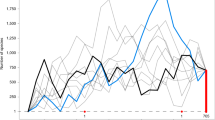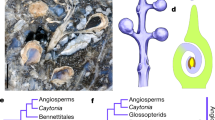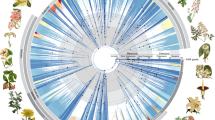Abstract
IN various notes in Science and in my longer studies of cycadeoids, the view is maintained that the angiosperms must be very old, and in so far as not actually discrete, related to the older flowering gymnosperms. Such views of descent relegate gnetaleans to the position of a side or blind line as suggested by Seward. The group was even held to be angiospermous by Lignier and Tison. In any event, it pictures in a lively manner some of the types of change both vegetative and reproductive which must mark the evolution of the angiosperms from homoxylous freely flowering forerunners.
This is a preview of subscription content, access via your institution
Access options
Subscribe to this journal
Receive 51 print issues and online access
$199.00 per year
only $3.90 per issue
Buy this article
- Purchase on SpringerLink
- Instant access to full article PDF
Prices may be subject to local taxes which are calculated during checkout
Similar content being viewed by others
References
Meddelelser om Grønland, Bd. 85, No. 4.
Pal. Ind., 20.
Author information
Authors and Affiliations
Rights and permissions
About this article
Cite this article
WIELAND, G. Origin of Angiosperms. Nature 131, 360–361 (1933). https://doi.org/10.1038/131360b0
Issue date:
DOI: https://doi.org/10.1038/131360b0



